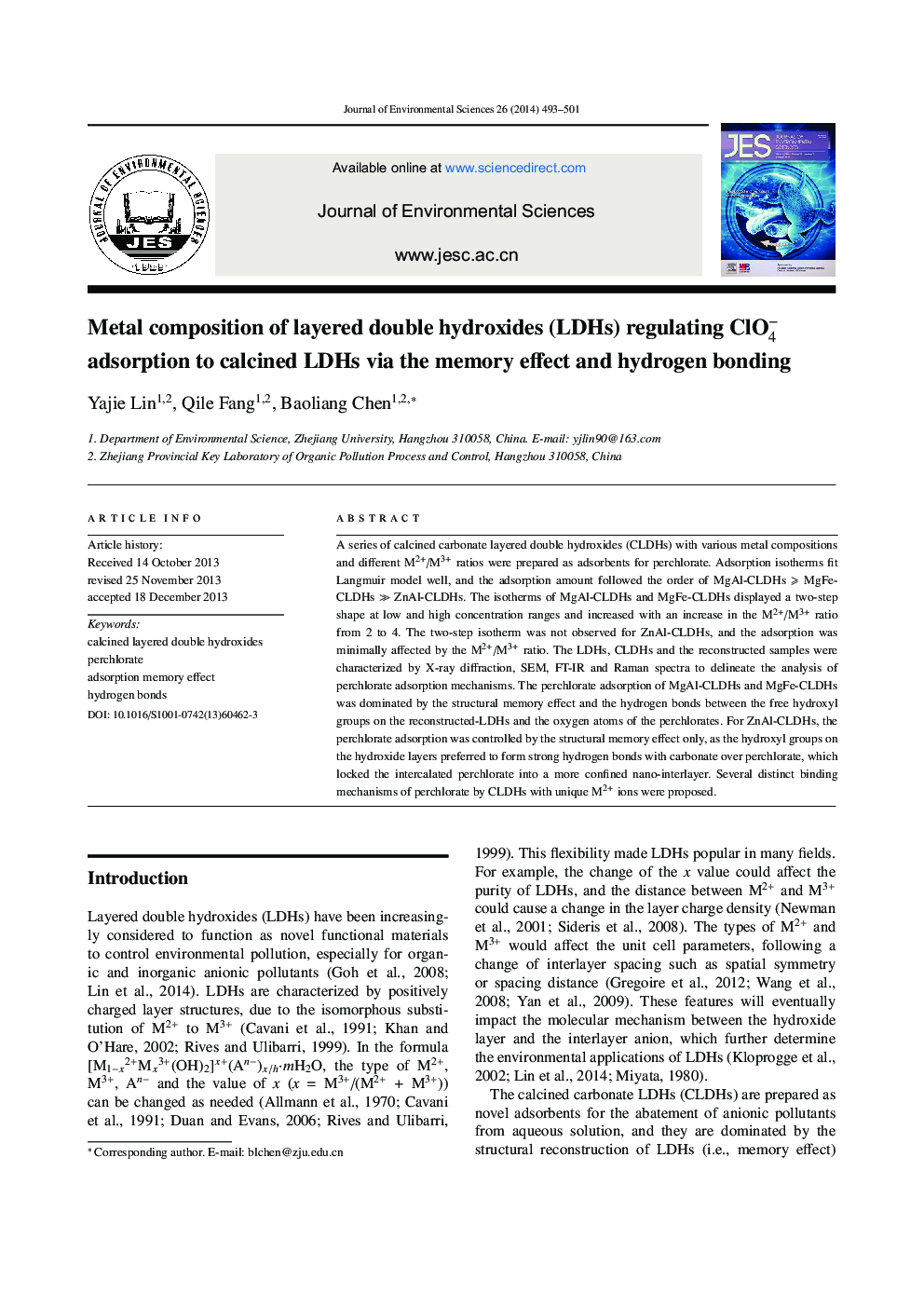| Article ID | Journal | Published Year | Pages | File Type |
|---|---|---|---|---|
| 4454284 | Journal of Environmental Sciences | 2014 | 9 Pages |
A series of calcined carbonate layered double hydroxides (CLDHs) with various metal compositions and different M2+/M3+ ratios were prepared as adsorbents for perchlorate. Adsorption isotherms fit Langmuir model well, and the adsorption amount followed the order of MgAl-CLDHs ⩾ MgFe-CLDHs ⩾ ZnAl-CLDHs. The isotherms of MgAl-CLDHs and MgFe-CLDHs displayed a two-step shape at low and high concentration ranges and increased with an increase in the M2+/M3+ ratio from 2 to 4. The two-step isotherm was not observed for ZnAl-CLDHs, and the adsorption was minimally affected by the M2+/M3+ ratio. The LDHs, CLDHs and the reconstructed samples were characterized by X-ray diffraction, SEM, FT-IR and Raman spectra to delineate the analysis of perchlorate adsorption mechanisms. The perchlorate adsorption of MgAl-CLDHs and MgFe-CLDHs was dominated by the structural memory effect and the hydrogen bonds between the free hydroxyl groups on the reconstructed-LDHs and the oxygen atoms of the perchlorates. For ZnAl-CLDHs, the perchlorate adsorption was controlled by the structural memory effect only, as the hydroxyl groups on the hydroxide layers preferred to form strong hydrogen bonds with carbonate over perchlorate, which locked the intercalated perchlorate into a more confined nano-interlayer. Several distinct binding mechanisms of perchlorate by CLDHs with unique M2+ ions were proposed.
